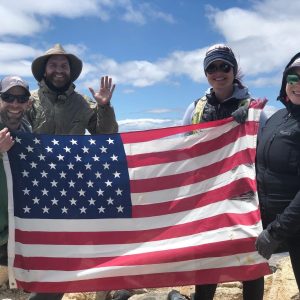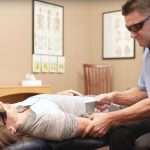The Benefits of Hiking on Both Mind and Body
Take a Hike! The Benefits of Hiking on Both Mind and Body
One of the greatest summer activities in Northern Nevada is hiking our many area trails. While we are all practicing social distancing, we still want to get out in nature and enjoy the summer. Hiking is an ideal activity for calming your mind, increasing creativity, and building muscles and stability in your lower body.
How hiking helps keep your body healthy
Recently Dr. Welch, Dr. Riley, Dr. Nelson, and Angelique Callegari, LMT, all submitted to the top of Nevada at Boundary Peak – a whopping 13 thousand feet above sea level!
“I love hiking,” said Dr. Welch. “It is a complete full body workout, in nature, and significantly less impact to your joints than running or other forms of cardio.”
Dr. Welch also recently hiked the Black Hills on a trip to South Dakota with his family. “Hiking is much different than walking,” Dr. Welch comments. “While you are still using the same basic biomechanics, walking uses passive dynamics which is like the swing of a pendulum – your legs keep swinging back and forth on a flat surface without a lot of additional energy.”
Dr. Welch explains that when you are hiking, your body and muscles are constantly moving and adapting to uneven terrain and changes in incline. “Your muscles and ligaments have to engage depending on the surface area, and your heart and lungs are working harder on inclined surfaces, burning more calories.” Some studies have shown that hiking uses almost 30% more energy than walking on flat ground.
In addition to burning more energy and calories, hiking also forces you to use and strengthen muscles that may not get as much action when walking. For example, shifting up or down and side to side can activate muscles on the outside of your legs, and constant stabilization can strengthen your calves, ankles, and the muscles around your knees. Keeping these areas strong and healthy can prevent common issues like torn ligaments, which often require surgery.
Hiking also helps with our sense of proprioception. It is one of our lesser known senses, and gives us the ability to close our eyes and still know where our limbs and body are in space. An example of proprioception is your ability to sense where your nose is and touch it without sight, or maintain balance with your eyes closed. Our sense of proprioception is vital to injury prevention.
When you are hiking, you are building muscles in your ankles and legs. These muscles help to support stability and protect the connective tissue that can become injured through a sprain, for example. A study published in the American Journal of Sports Medicine shows that proprioceptive and balance training reduced the risk of subsequent ankle injuries by 60% in athletes training with a balance board while there was no reduction of sprain risk in the control group.
Hiking can help your mental and emotional state
Not only is hiking good for your physical activity, research shows it is also highly beneficial for clearing your mind, reducing mental illness, and enhancing creativity. In the study done by Stanford University in 2015, they found that participants who went on a 90-min walk through a natural environment reported lower levels of rumination (thinking about the same thing over and over) and showed reduced neural activity in an area of the brain linked to risk for mental illness compared with those who walked through an urban environment.
There is further evidence and theories that the benefits for creativity are related to how natural settings allow our attention to relax and our minds to wander in ways that can help us connect various ideas that are swirling around in our heads. Others suggest that the spaciousness and unpredictability in natural scenery somehow enhance creativity.
Tools to help you avoid injury while hiking
Whether you are getting out on the trail to enhance your physicality and strength or to clear your head (or both), there are some tools that Dr. Welch recommends that will help you avoid injury and keep your body performing optimally.
If you have knee issues or pain, hiking poles can be very effective to take off some of that strain and weight on the knee joint. They are also a good tool to increase stability, particularly when going downhill. Hiking poles are adjustable so you can change length depending on incline and your height or need for support.
Orthotics can also be a great tool in your hiking arsenal. Footwear is a very important consideration for hikers and while a well-made and supportive boot or shoe is critical to avoid injury or irritation, an insert or orthotic can help avoid fatigue and ensure the proper foot alignment. At NNC, we use a system called Foot Levelers to measure your foot and determine where problem areas lie. Then we can have a custom orthotic made and fitted to ensure proper step and spinal alignment from the ground up. If you are planning on hiking, or already do, talk to your chiropractor about inserts to ensure you are getting the best alignment to keep you injury-free.
Proprioceptive training can be particularly helpful If you have experienced several ankle sprains. After an ankle sprain, special proprioceptive sensory neurons in the ankle can become damaged and stop working as well as they did before the injury. This explains the importance of proprioceptive training as a key component of rehabilitation, and prevention of further injuries. Dr. Welch and his colleagues at the clinic routinely prescribe balance and proprioceptive training to keep you out on the trails.
Go Hiking near Reno!
So get out into nature this summer by hiking! Grab a buddy and your dog, or just get some “me time” and explore some of the wonderful trails the Truckee Meadows has to offer.







